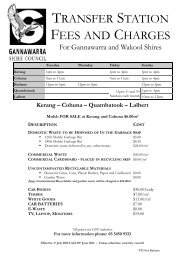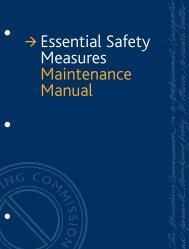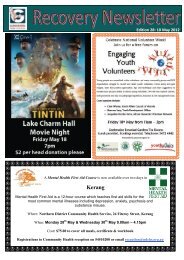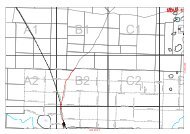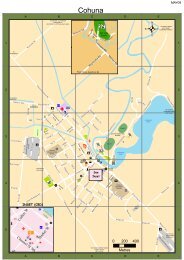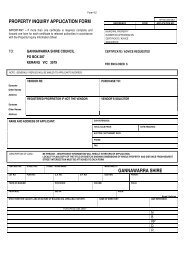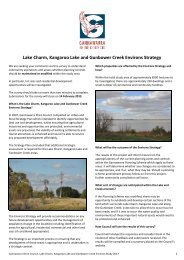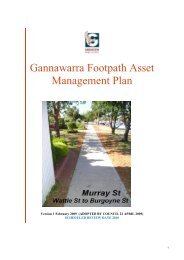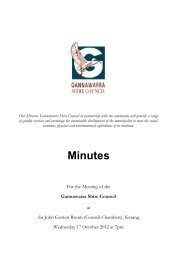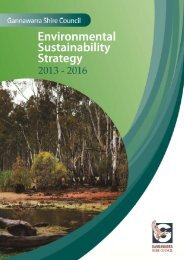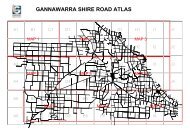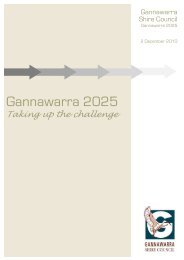Gannawarra Shire Heritage Study Stage One Volume One Thematic ...
Gannawarra Shire Heritage Study Stage One Volume One Thematic ...
Gannawarra Shire Heritage Study Stage One Volume One Thematic ...
Create successful ePaper yourself
Turn your PDF publications into a flip-book with our unique Google optimized e-Paper software.
opened in October 1904 and formed an important link between the two towns as well as linking New South<br />
Wales to the Victorian railhead at Koondrook. The Barham-Koondrook Bridge is today listed by the National<br />
Trust (Victoria) (see Figure 8).<br />
With the establishment of the railway from Kerang to Murrabit in 1925, the construction of a road and<br />
railway bridge across the River Murray at Murrabit began in 1924 and opened in 1926. The rail extension to<br />
Stony Crossing in New South Wales from Murrabit opened in 1928.<br />
Miss M. G. Keats, the first woman to graduate from the Veterinary Faculty at University of<br />
Melbourne in 1923, was appointed Inspector of Stock for the Gonn Crossing on the River Murray. Her<br />
contribution to the district is marked today by the Miss M. G. Keats Picnic Area at Murrabit.<br />
Figure 8. Barham-Koondrook bridge in 1993. Photo courtesy of Barham-Koondrook Historical Society.<br />
6.2 The river trade<br />
Trade on the Murray-Darling river system served South Australia, western New South Wales, the<br />
Riverina, and northern Victoria. The first steamboats were introduced by William and Thomas Randall and<br />
Francis Cadell in 1853. Cadell was induced to form the River Murray Navigation Company by the South<br />
Australian Legislative Council to deliver goods to Victoria’s burgeoning goldfields. Squatters in the study<br />
area relied on ports of entry and clearance at Echuca and Swan Hill, declared under the Customs Act of 1857,<br />
for supplies of flour, sugar and tea, and to export livestock and wool. Stations such as Reedy Lake and<br />
<strong>Gannawarra</strong> runs had access to the steamers (at today’s Benjeroop and Koondrook respectively) which<br />
continued to deliver provisions to homes on the river as late as 1914. Wheat farmers in the north of the <strong>Shire</strong><br />
depended on paddle steamers to transport their wheat. The steamer ‘Little Wonder’, for instance, plied the<br />
<strong>Gannawarra</strong> <strong>Shire</strong> <strong>Heritage</strong> <strong>Study</strong> <strong>Stage</strong> <strong>One</strong> <strong>Volume</strong> <strong>One</strong> <strong>Thematic</strong> Environmental History<br />
Robyn Ballinger (History in the Making) December 2008<br />
38




